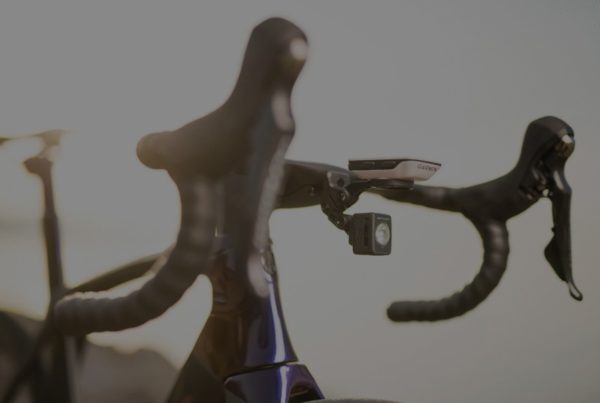By Bob Mionske
Dear Bob,
I am getting ready for the new season of racing and am planning out my training schedule in preparation for the spring races. My teammate and I want to work on our leg speed and plan to motor-pace behind my car. Can I get a ticket for pacing him like this?
Peter S.
Eugene, Oregon
Dear Peter,
I do not recommend that you motor-pace your friend. But if you insist, I offer the possible legal ramifications as well as some basic pacing advice. This is the classic “do as I say, not as I do” lecture. In fact, when I was racing and training, I wasn’t even smart enough to limit my motor-pacing to willing and complicit drivers.
I was riding a borrowed cyclo-cross bike with limited gearing and was spun out going downhill with my head down, when the woman I was drafting hit her brakes for no reason (or maybe she did have a reason!). We had made eye contact through her rear view mirror and I remember thinking that she had a strange resemblance to the woman in the movie “Misery.” Anyway, this was a two-lane one-way street and after I ran into her bumper, I flew upside down between the lanes for a long time before I landed on my back still strapped into the toe-clips. The driver didn’t stop and, for a while, neither did the other traffic, which continued to pass me on both sides. After I managed to drag my carcass off the street, an ambulance arrived, as well as the police. I was on my way to convincing the cop that I was lawfully riding in traffic and “changing lanes” when this driver ”unexpectedly braked,” when up walked an off-duty police officer. He presented his version of the story. Apparently, he was traveling too slowly for me and I had passed between him and other vehicles before settling in behind the Kathy Bates look-alike. I was ticketed for following too closely.
One of the only times I organized a motor pace session was almost equally disastrous. A friend of a friend kept offering to take me out motor-pacing and I finally agreed. We made our way to a quiet country road and began our session. I got up to speed, but he simply followed behind me. I kept waving for him to pass me and he took my waving as a command to get even closer to my rear wheel and rev his engine louder ala Johan Bruyneel style. Eventually, I pulled over and asked him what he was doing. He thought motor-pacing was an effective method of speed training because the cyclist would force themselves to go faster and faster to avoid being run over by a motor-vehicle. I opted for an easy ride by myself and laughed out loud every time I reflected on this innovative “ride-for-your-life” training method.
Now to your question. You know how everyone always says, “we’d do it, but the lawyers won’t let us?” Well, in this instance, there is a lot of truth to that old saw. Not only can both you and your friend get into trouble, you will be amazed at all the different ways you can get into hot water. Our home state, Oregon, is a good example, because its traffic laws are fairly standard and therefore, my answer should apply to most states. Let’s start with the obvious. The Oregon Traffic Code makes bicyclists riding upon a public way subject to the provisions of the traffic code, and extends to them the rights and duties of motor vehicle operators. Section811.485 makes it a Class B traffic offense to
“follow another vehicle more closely than is reasonableand prudent.”
So right off the bat, we can ticket your friend for following too closely. Next, section 811.140 of the traffic code makes reckless driving a Class A misdemeanor. Note that this is no longer just a traffic offense, it’s a misdemeanor. That means that, although highly unlikely, one could face up to a year in jail for this one. By “reckless” the statute means:
“A person is aware of and consciously disregards a substantialand unjustifiable risk that the result will occur or that the circumstanceexists. The risk must be of such nature and degree that disregard thereofconstitutes a gross deviation from the standard of care that a reasonableperson would observe in a situation.”
This might be particularly attractive to a law enforcement officer because both you and your friend could get busted for the same act. Of course,you could get lucky and merely draw a ticket for careless driving. That’s a Class B traffic offense, unless he crashes, in which case you could both pull a Class A traffic offense. That’s a suspended license and $600. (Whether you can get your driver’s license suspended for violating a traffic law while riding your bike is a fascinating question that we’ll save for another day.)
If your friend crashed and the officer just wanted to ruin your day, he could cite you for vehicular assault of a bicyclist. Sound like a stretch? Section 811.060(2)(a) includes within the definition of that offense:
“A person [who] recklessly operates a vehicle in a mannerthat results in contact between the person’s vehicle and a bicycle operatedby a person or a person operating a bicycle.”
Because “recklessly” is defined the same way as in reckless driving, if the cyclist you are motorpacing bumps into the back of your car and crashes, you could be cited for a Class A misdemeanor and, again, face a possible year in jail, even though you never intended to harm him. Of course, this is all worse case scenario stuff and in all the years my teammates and I motor paced, I don’t remember any problems with the police (if readers have been pulled over and ticketed or want to share their motor pacing experiences with the law, please e-mail me).
If you are stopped by a police officer for motor pacing, I recommend calmly discussing the competitive reasons for motor pacing and your vast experience in doing so, all the time using a voice of contrition. The officer may let you continue with a caveat “to be careful” or command you to cease pacing altogether, both of which are better than being ticketed. A related subject involves insurance coverage for injuries sustained while motor pacing. Most automobile insurance policies exclude coverage if the car is used in a “race or other contest of speed.” I have found no published cases in which a bicyclist motor pacing a car crashed, but in a 1966 Alabama case, Alabama Farm Bureau Insurance v. Goodman,two friends, one on a bicycle and the other in a car, raced each other down the block. The bicyclist was drafting the car when they collided, injuring the cyclist. Because the “speed of their respective vehicles was of the essence,” in their contest, the judge determined that they were involved in a “competitive speed test,” and that the motorist’s insurance carrier did not have to pay the bicyclist’s claim.
Let’s assume that your friend, rather than looking to your automobile insurance carrier, tries to get his medical insurance or homeowner’s insurance policy to pay. In the 1992 Minnesota case of State Farm Insurance v.Seefeld, the court concluded that where an accident results from a combined motor vehicle and non-motor vehicle incident, a homeowners or individual medical insurance carrier can be forced to cover the expenses of their customer. However, most homeowners and medical insurance carriers contain what is called an “extraordinary risk” exception. If the customer engages in an unusual activity that is extraordinarily dangerous and gets hurt, the insurance company is off the hook. While typical bicycle riding has frequently been held to not be an “extraordinarily dangerous activity,” motorpacing a foot behind a car at 30 mph is going to be problematic.
While my personal experience and belief lead me to conclude that motorpacing has proven value for serious cyclists, I do not recommend using this form of training, as it is dangerous and clearly illegal. If you are going to motor pace, I suggest using a motorcycle, as it is easier to avoid collisions, it simulates race conditions better than an auto and is less likely that you will get pulled over by the police. If you are going to motor pace behind an automobile only use someone who has hours of experience driving with a cyclist on his/her bumper, and make sure you can see through the windows of the vehicle. Don’t look at the bumper and only motor pace on lightly traveled roads. Before drafting behind either a motorcycle or automobile make sure you and the driver have gone over all commands and contingencies including how to handle sudden stops, intersections, potholes, police, variations of speed etcetera. Good luck and be careful out there.
Bob
This article, Too Close For Comfort, was originally published on VeloNews on January 18, 2007.



